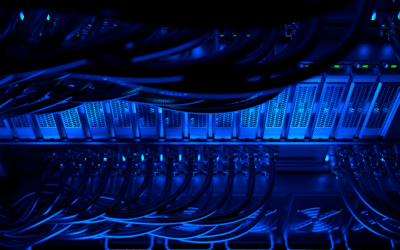People around the globe are reacting to the spread of COVID-19, the coronavirus strain that was first discovered in Wuhan, China, in 2019. The measures that are being taken—business closures, event cancellations, social distancing, work from home policies—are all aimed at preventing the spread of this infectious disease. We all play an important role in protecting the vulnerable members of society, and no one wants to get sick. So, let’s look in depth at a simple step you can take to keep yourself and your family, friends, neighbors, coworkers, and peers healthy: disinfecting your devices.
How does COVID-19 spread?
The virus spreads through contact with someone who is infected. A person who is sick coughs and exhales small droplets which can land on surfaces or people. Other people become infected when droplets make their way to a person’s eyes, nose, or mouth. That’s why Google’s “The Five” say:
- To avoid touching your face
- To wash your hands often
- To cough into your elbow
- To keep your distance from others
- And to stay home when sick
These five recommendations should all be followed, as should the CDC’s advice to protect yourself by cleaning and disinfecting surfaces daily.
The virus can survive on surfaces for varying periods of time. Harvard Med School found that it could survive up to 24 hours on cardboard and two to three days on plastic or stainless steel.
What should I clean?
You can and should perform a daily clean of the frequently used surfaces in your home. According to FOX31 Denver, these surfaces include:
- Doorknobs
- Table surfaces
- Chairs (seats, backs, arms)
- Kitchen counters
- Bathroom counters
- Faucets and faucet knobs
- Toilets (seat and handle)
- Light switches
- Remote controls
- Game controllers
Not to be forgotten is your cell phone. If Proporta, a company that sells antimicrobial phone cases, is to be believed, the average phone contains 25,127 germs per square inch. Mashable compared that figure to other household surfaces:
- Toilet seat: 1,201 bacteria per square inch
- Kitchen counter: 1,736 bacteria per square inch
- Pet food dish: 2,110 bacteria per square inch
- Checkout screen: 4,500 bacteria per square inch
- Doorknob: 8,643 bacteria per square inch
Timothy Julian, a Stanford University graduate who has researched disease transmission, explained to the Seattle Times that there’s a relatively high risk of transmitting pathogens from the glass surface of a cell phone to a person’s skin.
“If you put virus on a surface, like an iPhone, about 30 percent of it will get on your fingertips,” Julian said. And after that, “a fair amount of it may go from your fingers to your eyes, mouth or nose,” the likely routes of infection for viruses like COVID-19.
How do I disinfect my devices?
As per various sources, the best way to clean your cell phone is to remove the case and wipe it down with a disinfecting wipe or an isopropyl alcohol solution that’s at least 60-70%. Be careful not to get any moisture in the charging port as this can damage the device. Let your phone fully dry before putting its case back on.
The same idea goes for other devices like tablets, laptops, computer screens, keyboards, computer mice, headphones or earbuds, microphones, smart watches, and more. Apple gives specific advice for the iPhone and other devices, but advice seems consistent across the board: don’t use harsh chemicals like bleach on your tech, don’t get moisture in any openings, and don’t fully submerge a device in a cleaning agent—ever!
And as for the household surfaces that aren’t devices, the CDC says that your safest bet is to use common EPA-registered household disinfectants for applicable surfaces. Another option is to make a diluted bleach solution, using 5 tablespoons (1/3 cup) of bleach per gallon of water or 4 teaspoons per quart of water. The CDC says to read and follow manufacturer instructions for use and proper ventilation.
What should I take away from this?
You should feel more confident now about these simple steps you can take to keep your house and your devices much cleaner, because—be honest—when was the last time you cleaned your phone? Shook out the crumbs from your keyboard? Wiped the cracker dust from your computer mouse? Exactly. This is an excuse to do a little cleaning while also keeping yourself and those around you safer from risk. Remember, a disinfecting wipe or a 60-70% isopropyl alcohol solution will work for most devices—just don’t get them too wet—and a surface-appropriate household disinfectant will work for the rest of the house.
While we’re not health experts (thus all the advice borrowed from the CDC!), we are tech experts. During this time, as always, our team is standing by to talk and help you solve all your tech issues. Our Machado Consulting team has got your back. We can be reached here or by phone at (508) 453-4700.



